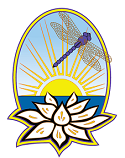
I have always wanted to create some kind of platform that could provide support to new and seasoned practitioners to support them in their Ayurvedic businesses. To this end, my friend and colleague, Suzanne Ropiequet and I worked together to create The Ayurvedic Approach. We are both dedicated practitioners and educators who recognize the need for support and outreach in our community. We believe that together we can build this network of support and continue the spread of Ayurveda throughout the US.
We value the work of all Ayurvedic professionals – whether they consider themselves Coaches, Counselors, Practitioners, or some other title. All of them are out doing valuable and important work, whether trained in America, India, or some other place around the globe. We are creating a worldwide movement to escort Ayurveda into our communities. There is a place for everyone doing the hard work of helping clients create balance with those principles.
We acknowledge that Ayurveda is often a lonely profession. Each one of us is inventing and, often, re-inventing the wheel to meet the needs of our clients. We thought it would be wonderful if there was a place that an Ayurvedic professional could go to for support and tools for working with their clients. We envisioned a place of community, connection, and education – and The Ayurvedic Approach (TAA) was born.
What you’ll find on our TAA website:
- Blog posts that are written for you, the Ayurvedic professional – with topics that are supportive of you and your practice
- Business tips and support
- Practical applications for working with clients
- Education on topics of interest
- Protocol packages
- Our Protocol packages are designed to give practitioners a systematic approach to helping clients create balance around the foundational principles of Ayurvedic practice. Our first is the “Improving Sleep Quality” protocol package.
- The protocol packages are usable on all devices and include video introduction, detailed practitioner guidebooks, and brandable handouts that you can use with your clients.
- At the release of each protocol package, we will feature a series of blogs on the topic that you can access at no charge to deepen your understanding of the topic
- Future topics include those pertinent to every Ayurvedic Health Counselor or Practitioner. Including…
- Regulating Agni
- Balancing Elimination
- Introducing Self-Care practices
- Addressing Mental and Emotional Wellbeing
- …and more…
- Advanced Practitioner content
- Currently we offer webinar recordings on Insomnia, as well as conditions that have insomnia as a significant symptom in the imbalance, specifically Anxiety/Depression and Peri-menopause/Menopause.
- Connection (in development)
- We plan to build on our Practitioner Support programs through future classes and recordings via the TAA website https://theayurvedicapproach.com
- We’ll also plan to develop an online platform to help you connect with me, Mary Thompson, and your colleagues to share practical ideas, insights, and knowledge
I’m glad you’re here. I’m excited to finally get these materials out in the world and I look forward to developing more as I learn what is most needed to support you to succeed in your Ayurvedic business.





